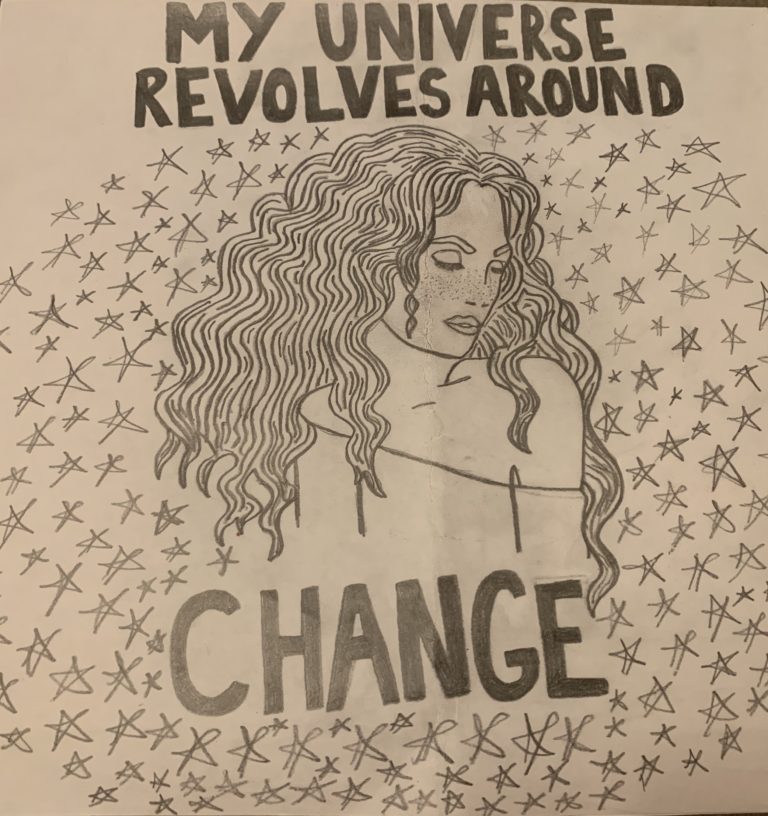
Sylvester Middle School, located in Burien, Washington, is in its fourth year partnering with us and chose to allocate a substantial portion of its budget to Arts Corps programming. In the following conversation, interim principal Chad Kodama and classroom teacher Tatiana Hahn reflect on the impact of arts integration in education and youth development at their school.
Arts Corps: Tell us a little about Sylvester more broadly, for those who may not be familiar.
Chad Kodama: Sylvester is a part of the Highline School District and we’re a 6th through 8th grade middle school. There’s a portion of students on free and reduced lunch plans and we’re also pretty diverse comparatively, serving around 50% white students and 50% students of color, the largest groups represented are from Latino and/or Hispanic, Black, and Pacific Islander communities.
Arts Corps: What were your impressions of the arts in school prior to the Arts Corps partnership?
Tatiana Hahn: I just celebrated my one year anniversary here last week, and before that, it was really limited. We only have the one art class and we have some art clubs and after school groups, but there are many, many, many kiddos here that have a lot of artistic ability — a lot of drawing, a lot creativity, stuff like that — and there just aren’t a lot of outlets for that kind of thing. Kelly, another teacher across the hall, was telling me about Arts Corps curriculum when I first got here and she was like, ‘Just wait until [Arts Corps] gets here, it’ll be a blast.’ That’s how I first found out about your work. Kelly got me all jazzed because she’d had such a positive experience every time.
Arts Corps: Sylvester Middle School recently designated $6,000 to Arts Corps programming. Why?
CK: Right, so I’m the custodian of public funds, meaning that I decide what to prioritize based on both community and staff input. Having worked with Arts Corps in the past, we saw the immense impact that it had on our core content areas. It was very important for us to keep the program up and running and to expand it beyond just one grade level, so now we’re doing three grade levels! Our teachers love it and our students engage with the lessons in a way that they might not otherwise in a more traditional setting. It’s really about making sure every child has something, an activity or interest, that they can connect with at school.
TH: You all just do amazing work with our kids. After I sat in on a lesson, I was like, ‘OK, I understand why kids love this and I understand why classroom teachers are totally willing to give up their teaching time to have Arts Corps come in. It’s a lot of time, but it’s worth every minute.
Arts Corps: Can you take us through what it’s like to sit in on an Arts Corps class?
TH: We spoke with teaching artist Meredith beforehand and then when her and Brian came in, they just had such beautiful control of the class in a way that honestly surprised me. They created this wonderful energy that the kids immediately picked up on, one of discipline and real respect. Even students who usually have problems in class were able to be quiet and positive just so they could participate, which you know, they’re not always able to do.
Arts Corps: What is the value of integrating the arts in with other academic subjects?
CK: Kids learn in so many different ways and so we educators need to make sure to offer multiple avenues to authentically connect with subject matter. When we started partnering with Arts Corps, there were so many robust, culturally responsive options for students to find their entry point into lessons. That is hugely important.
TH: The arts make learning more fun, engaging, interactive, and really accessible. I have many students who won’t say they’re mathmeticians or good readers, but they will say that they’re artists. That’s so awesome, right? A lot of them are willing to take that title of ‘artist’ on and really own it. That pride is beautiful to see in a 12-year-old student. With other subjects, there’s this perception that you have to be an expert or be really comfortable with it to succeed. With art, students get to create something that’s all themselves. No judgement, nothing quantifiable or measurable, just pure creative expression.
This article originally appeared in the Arts Corps 2022 Annual Report.
